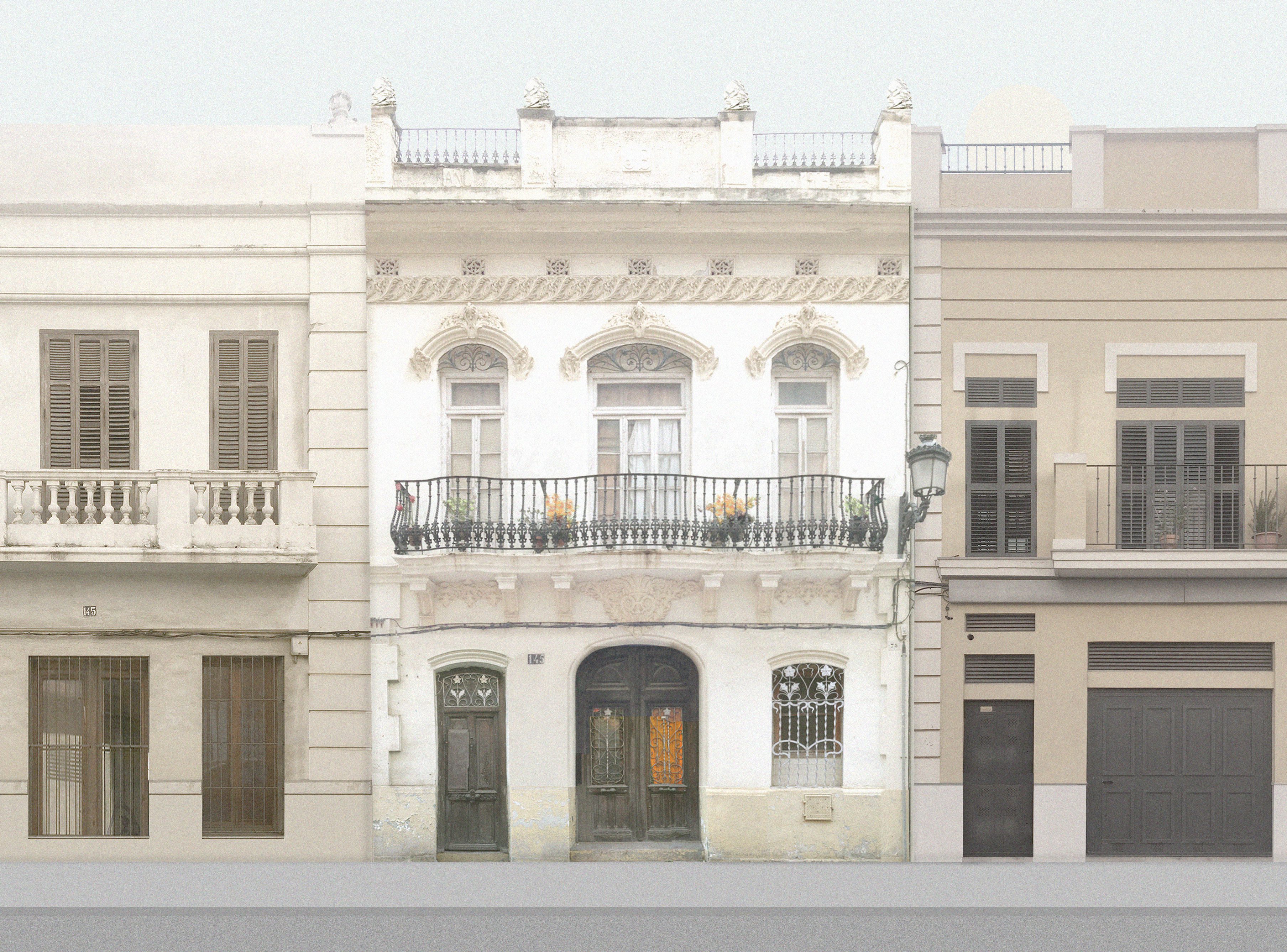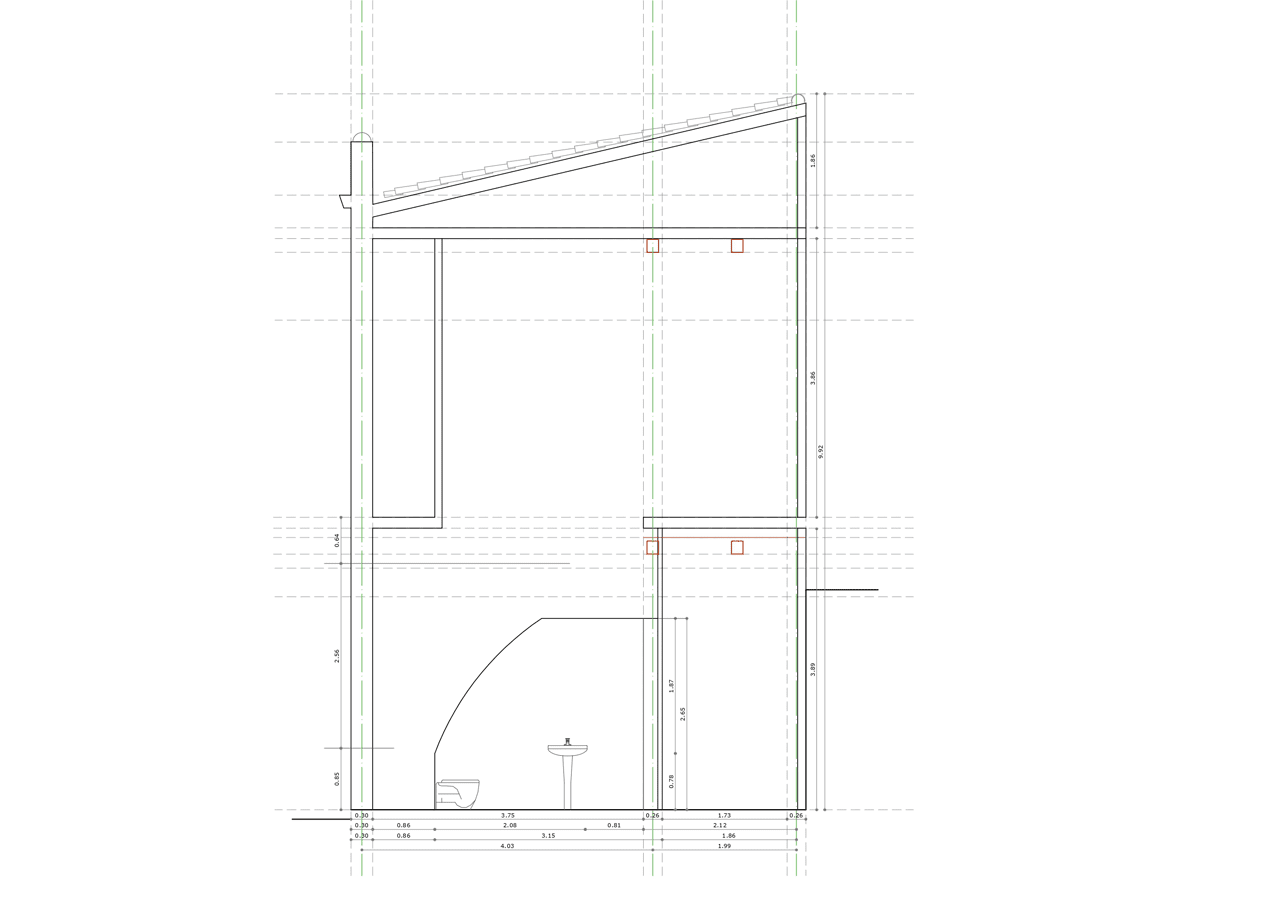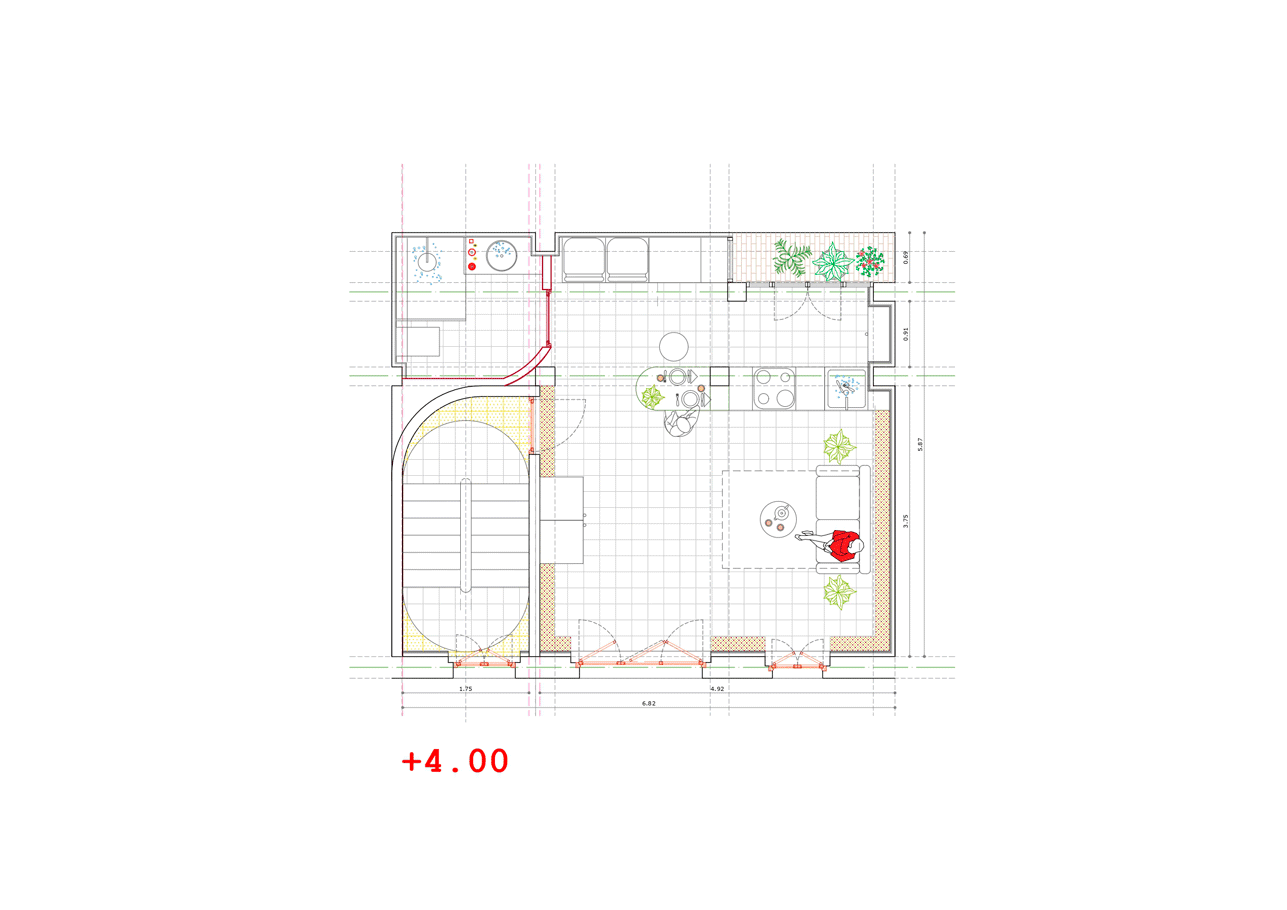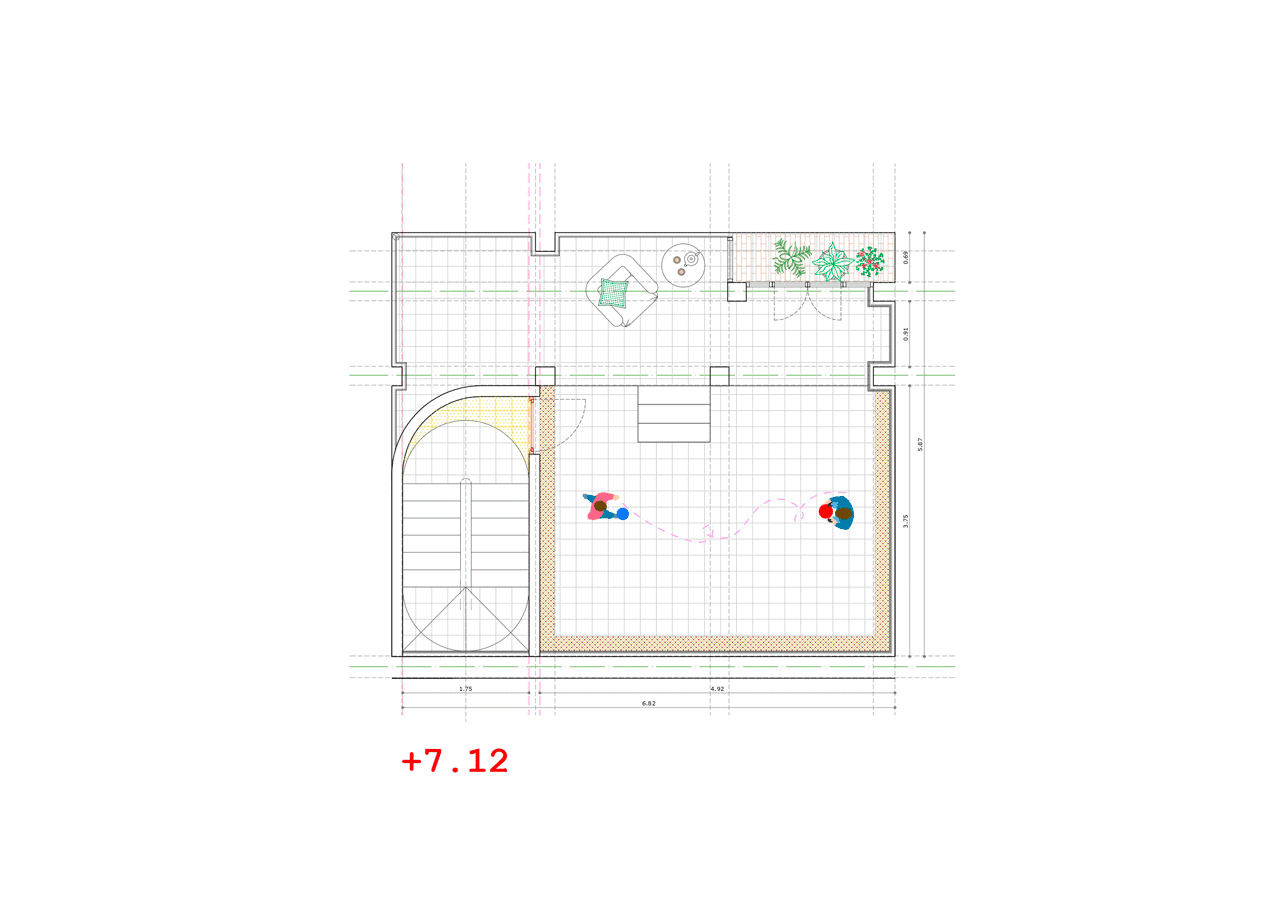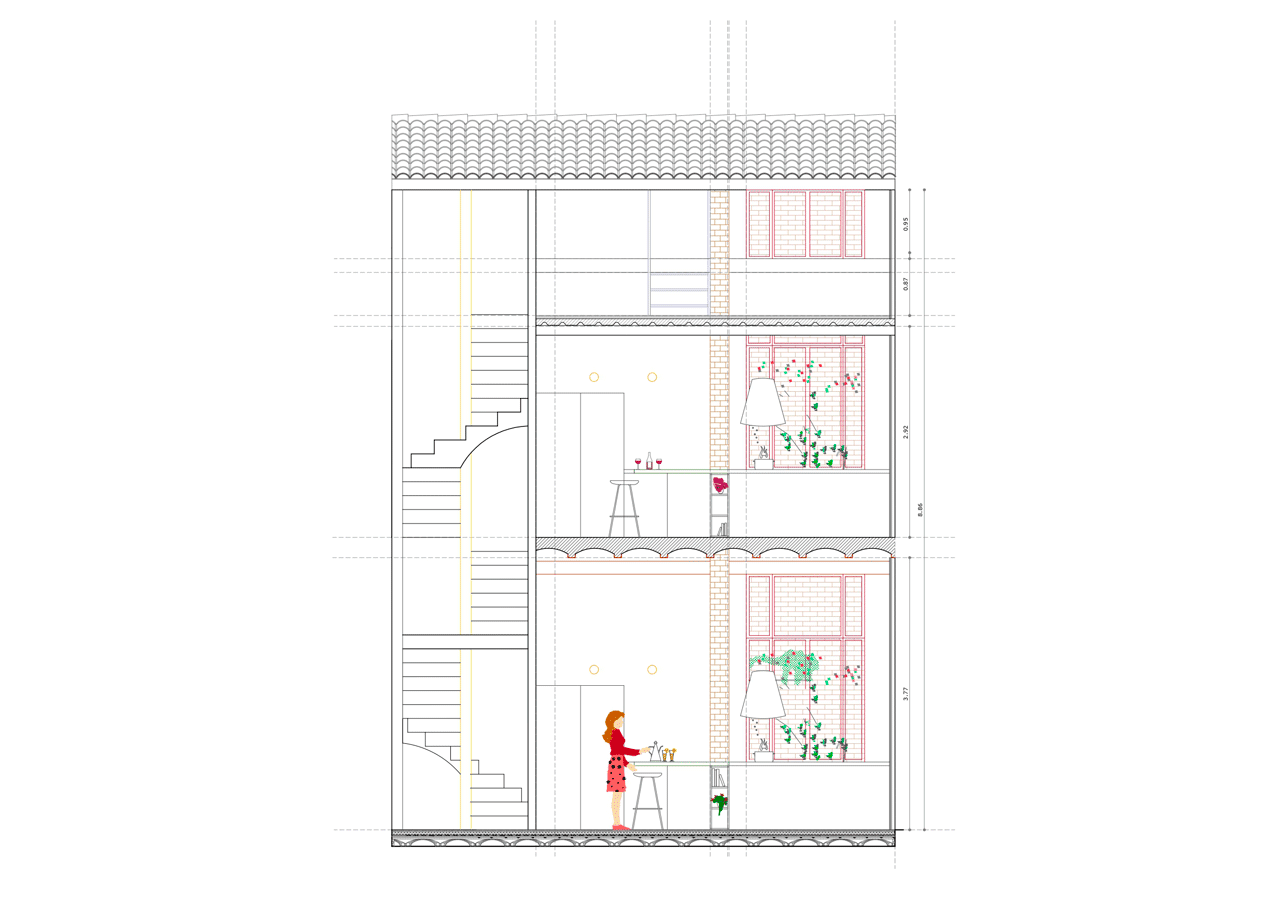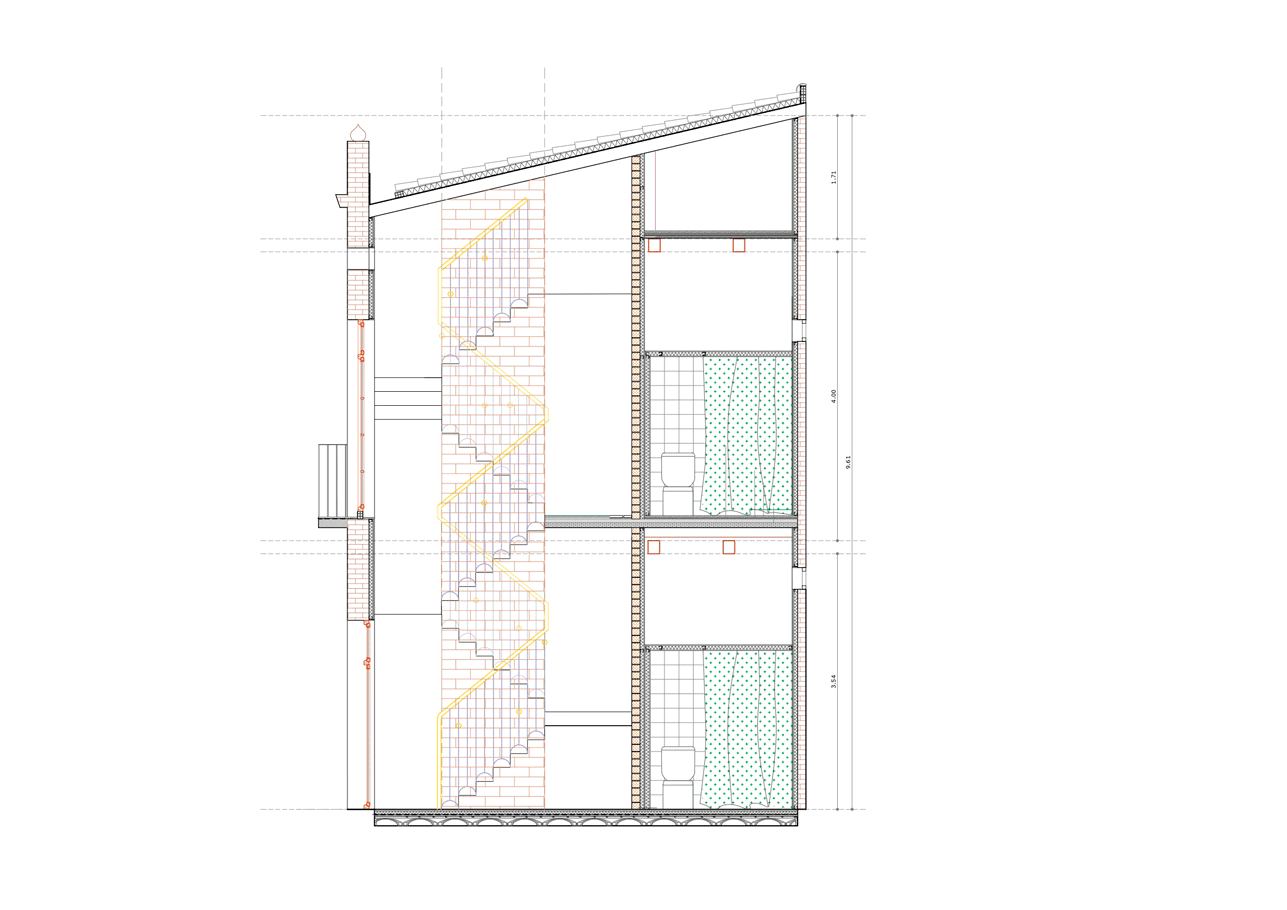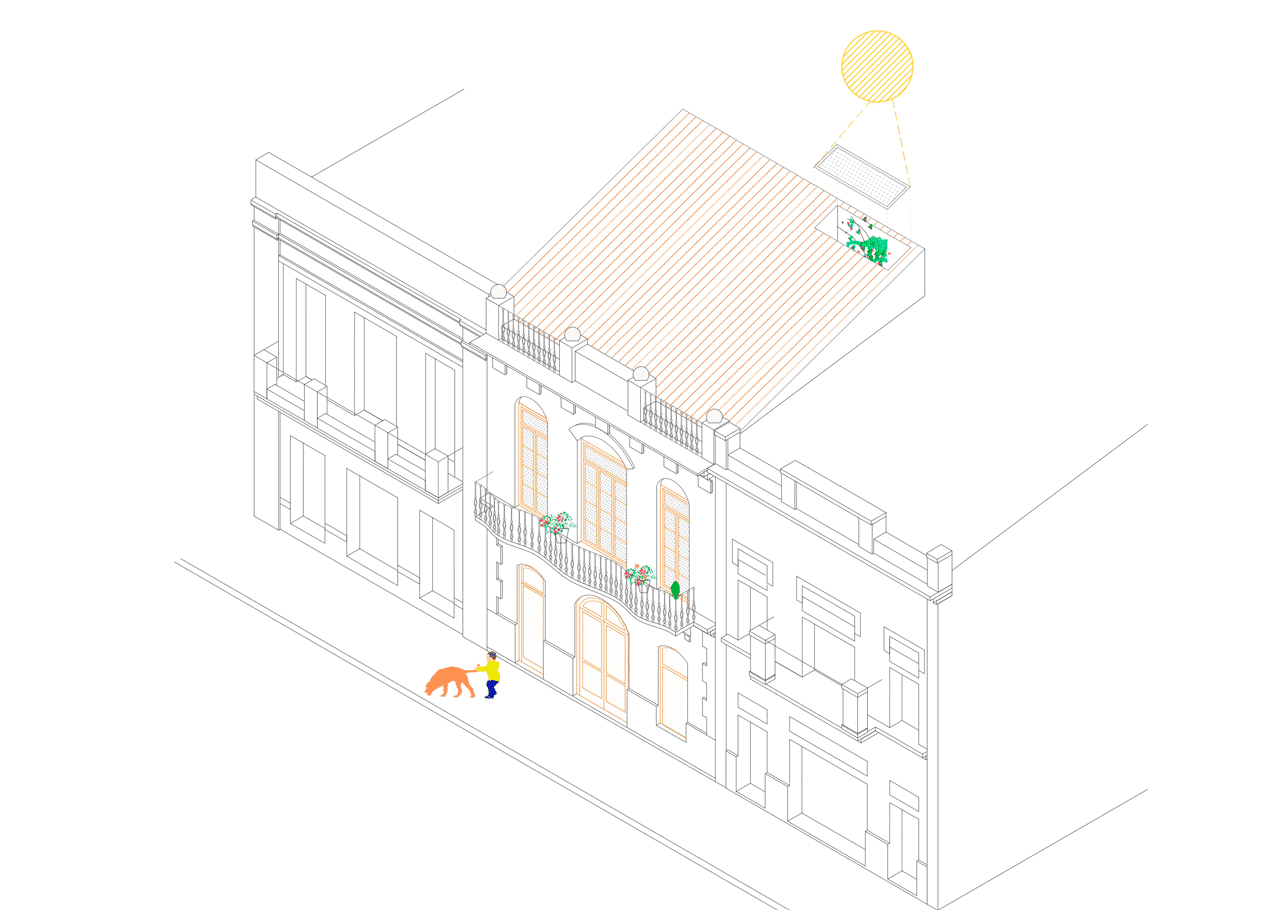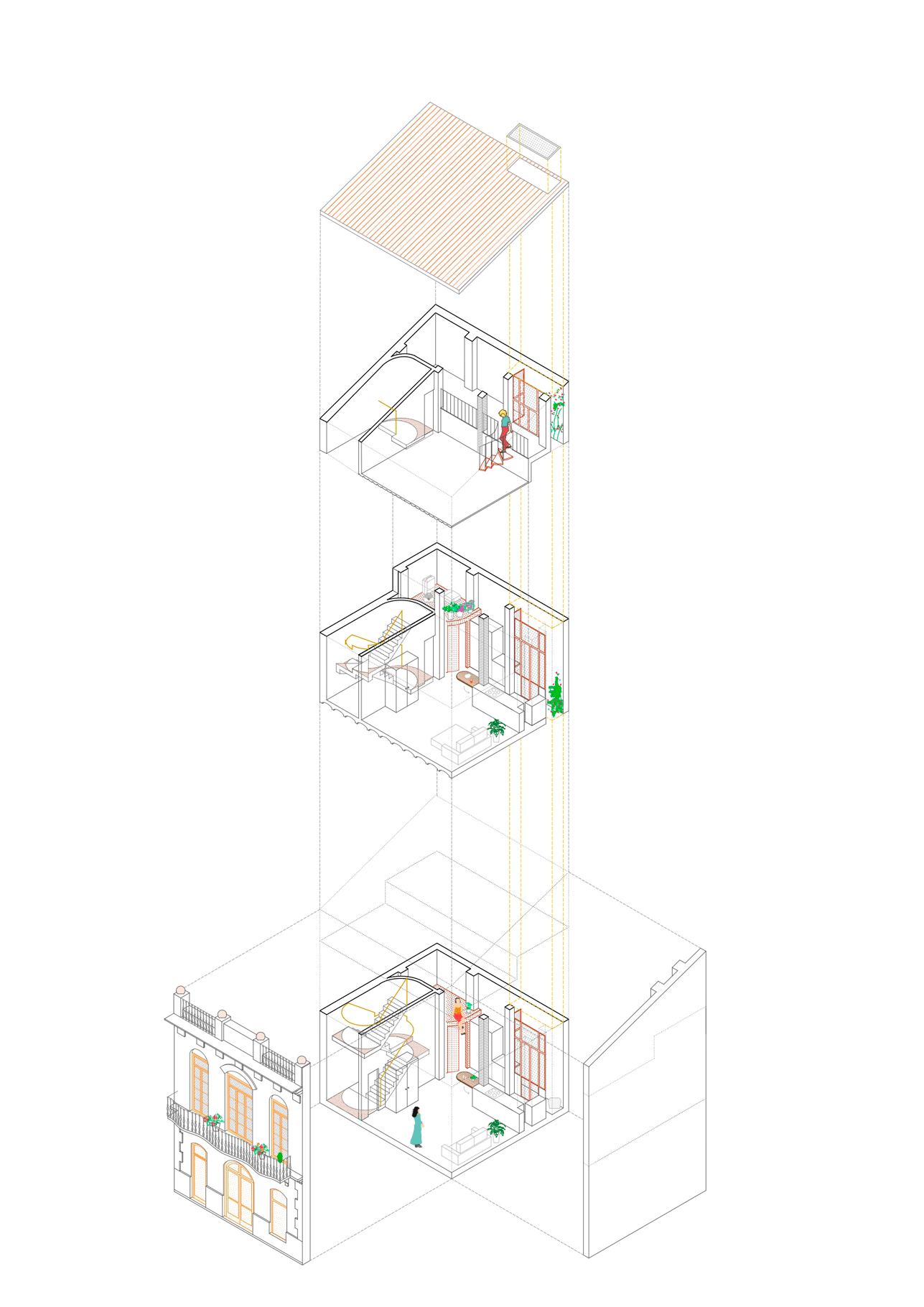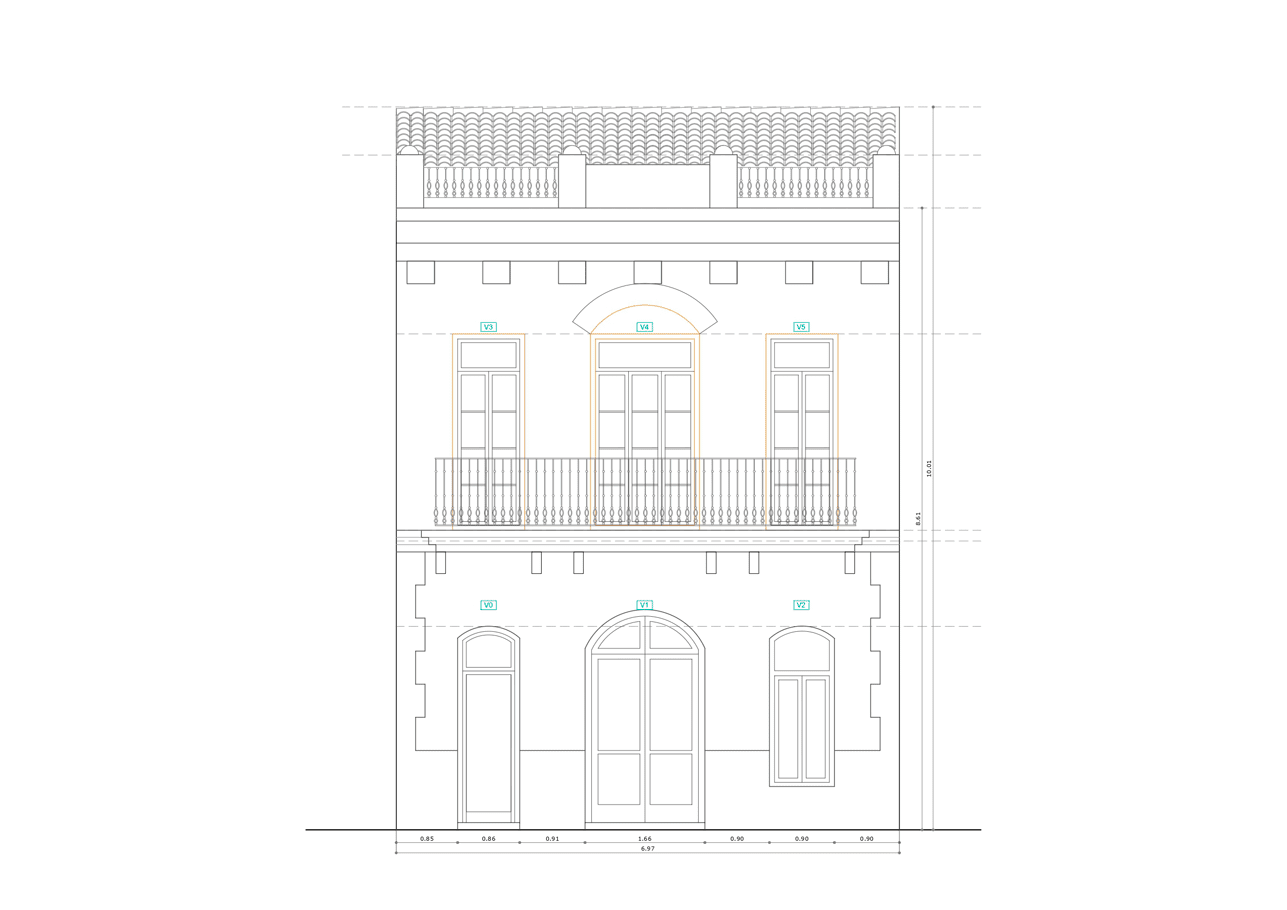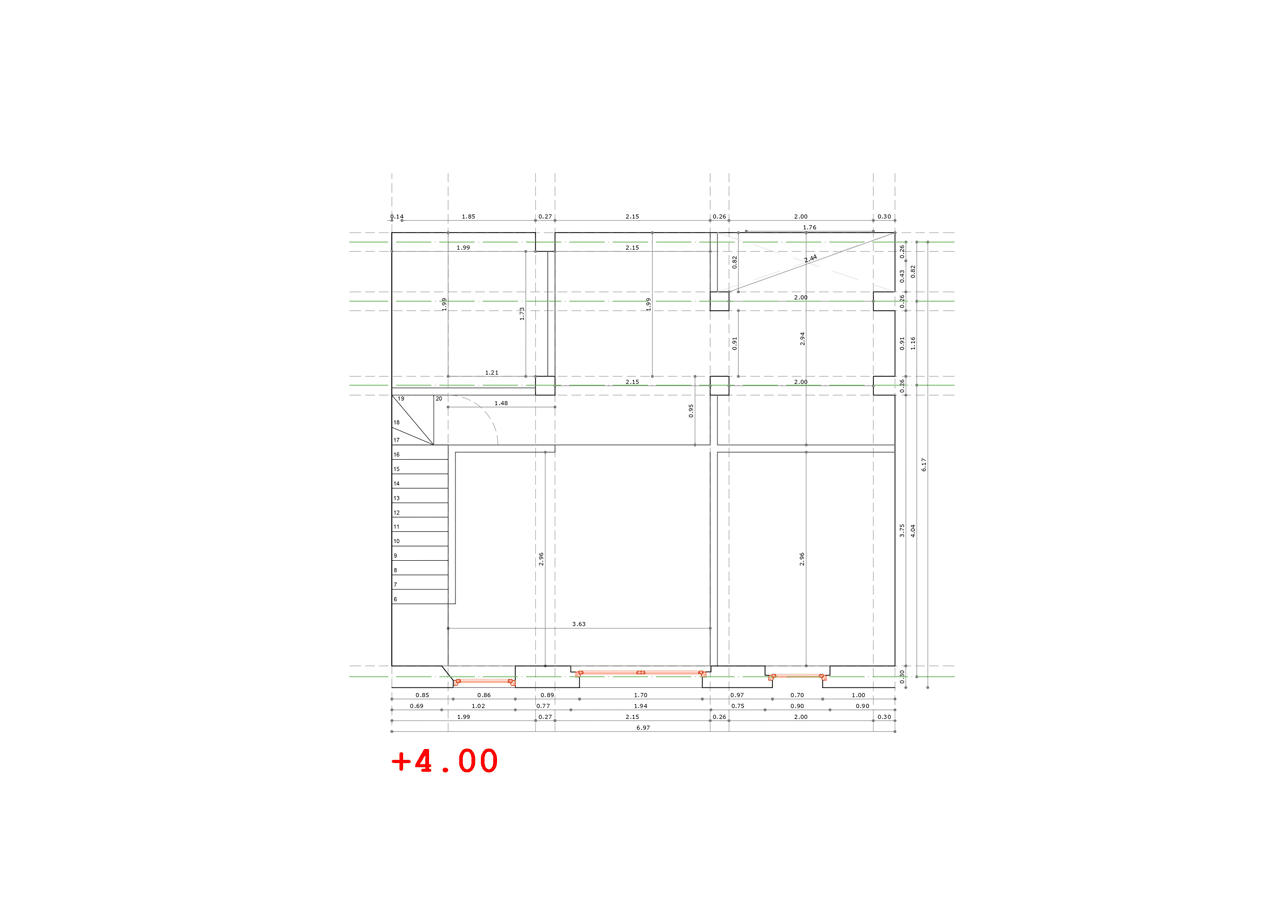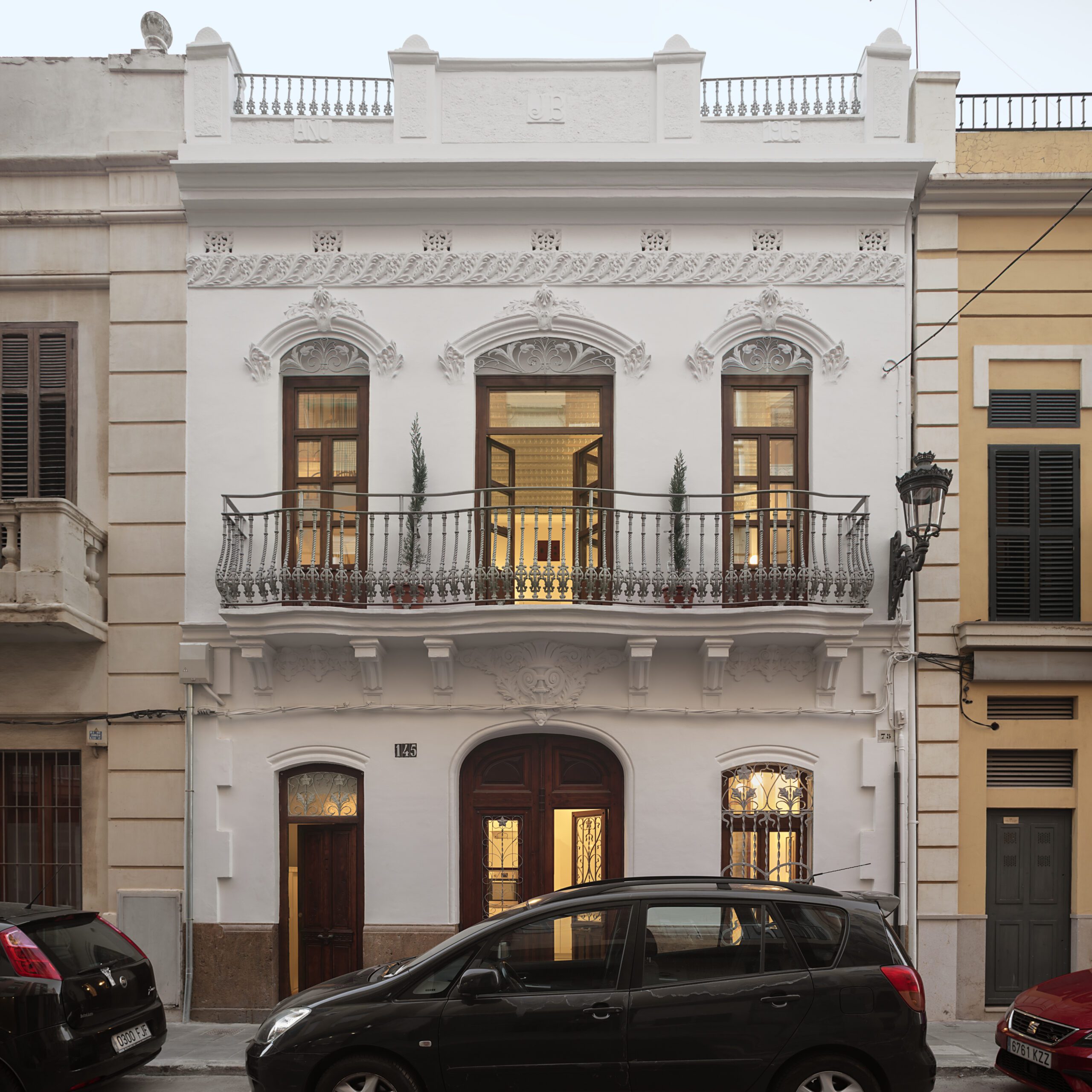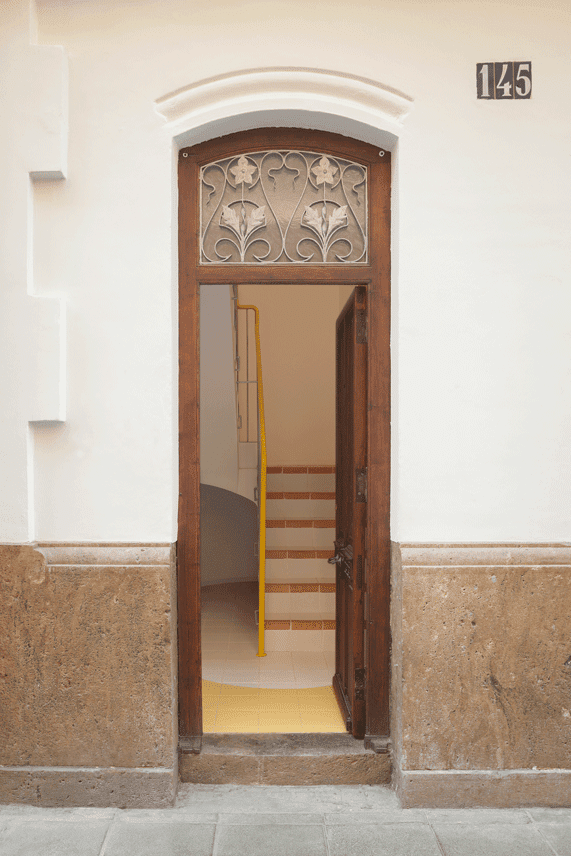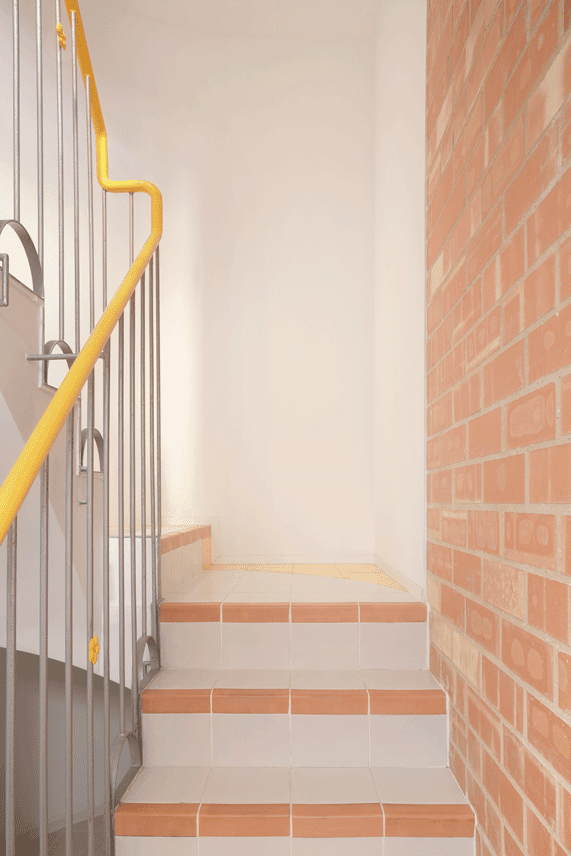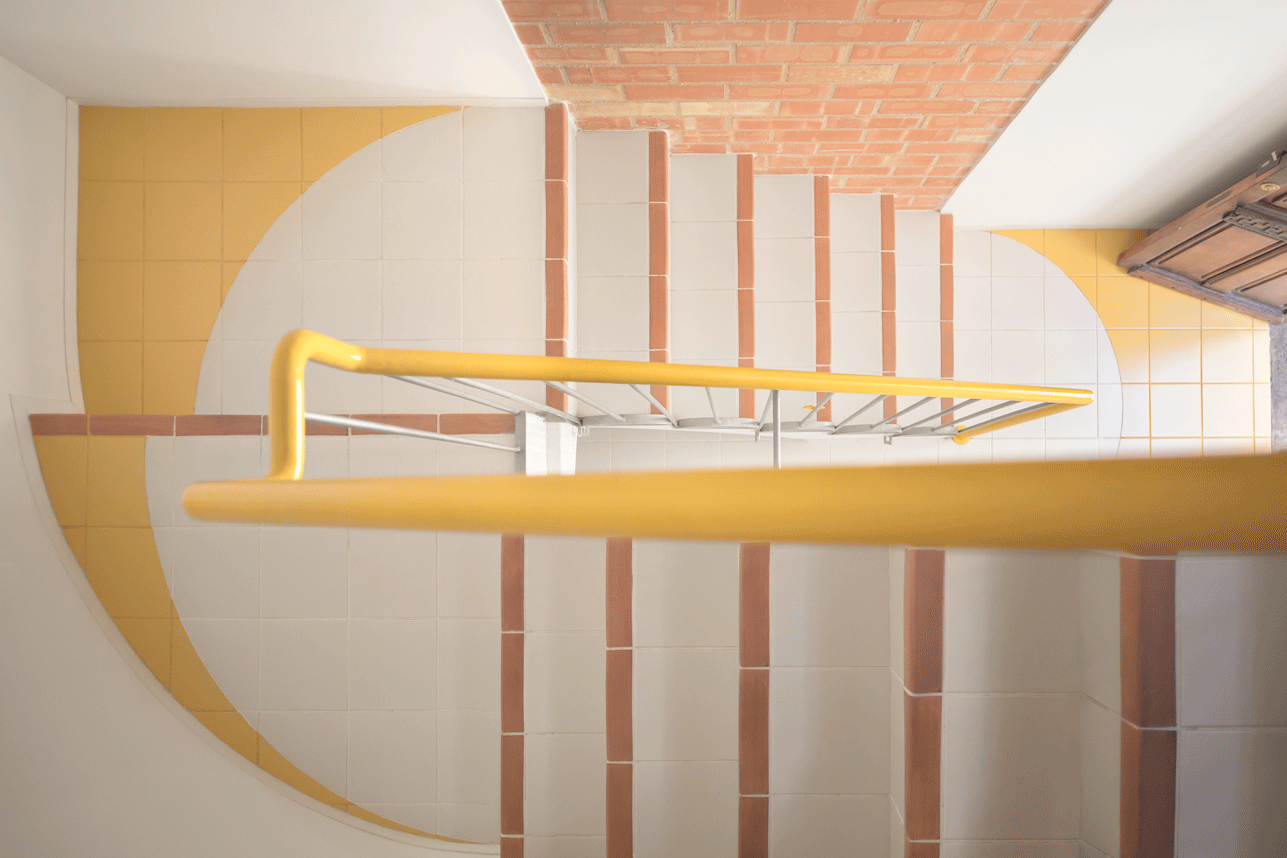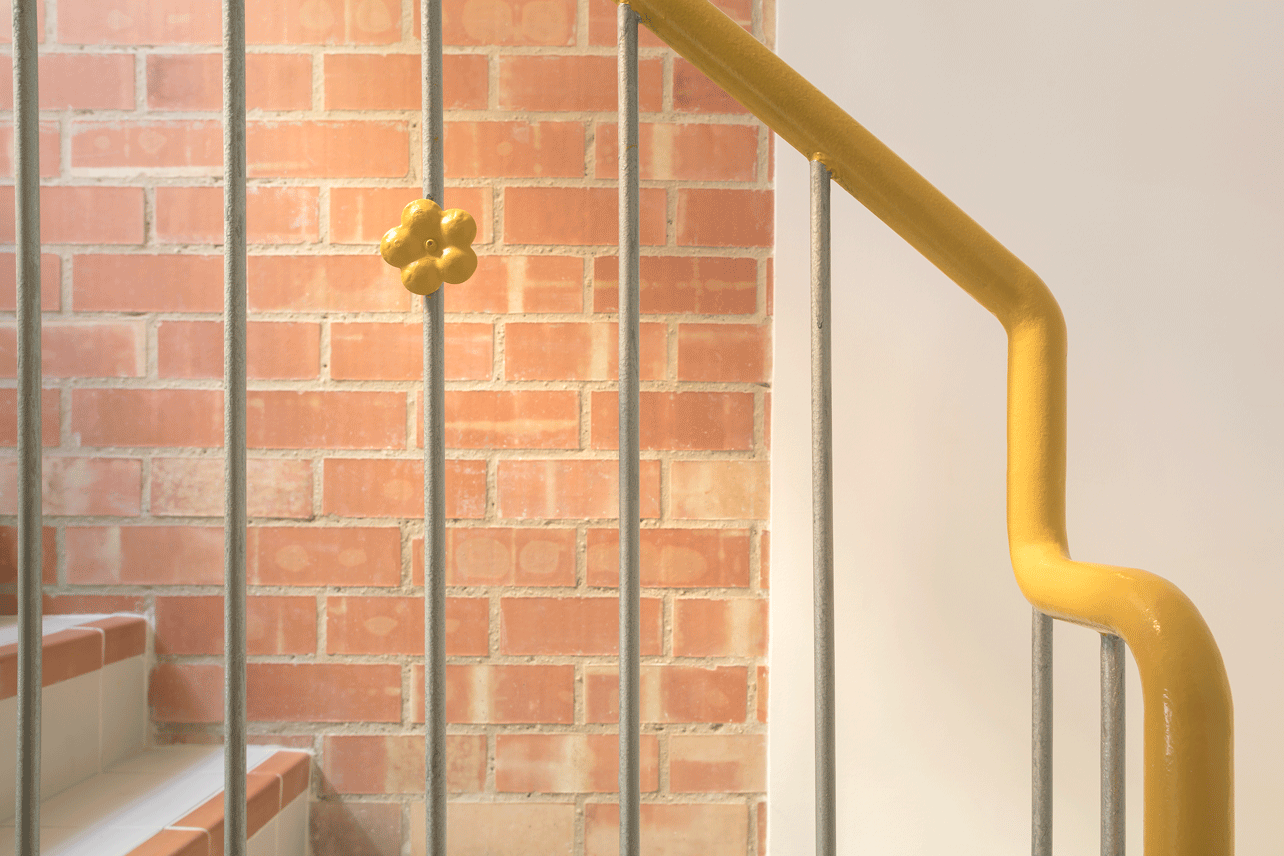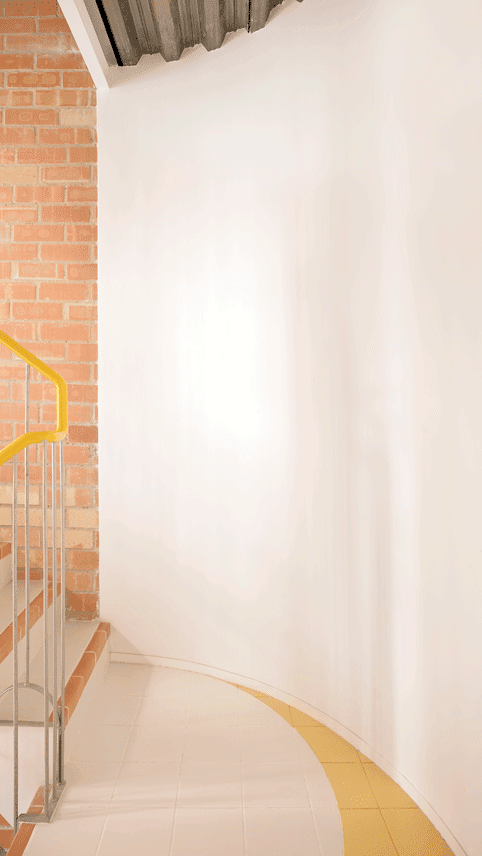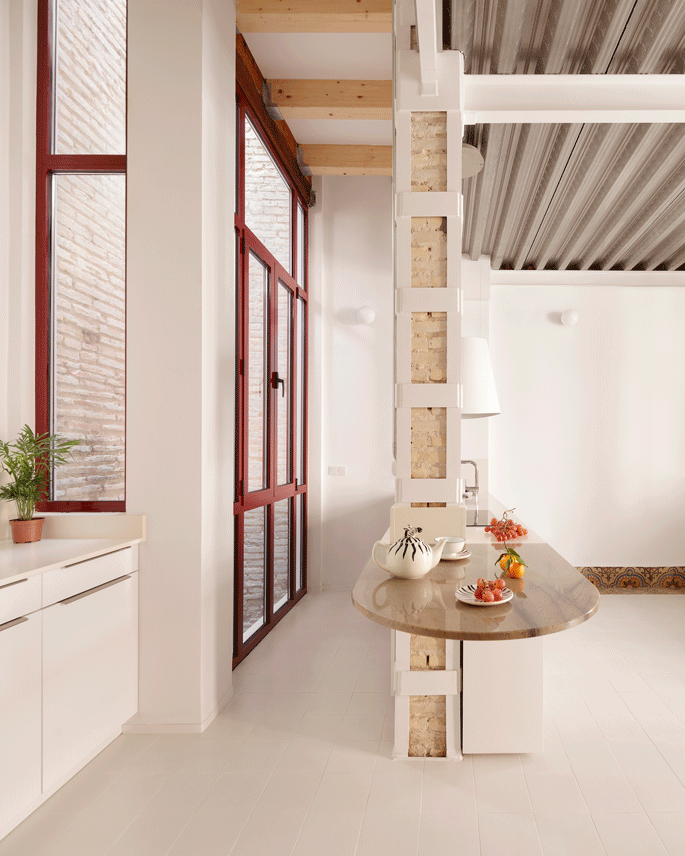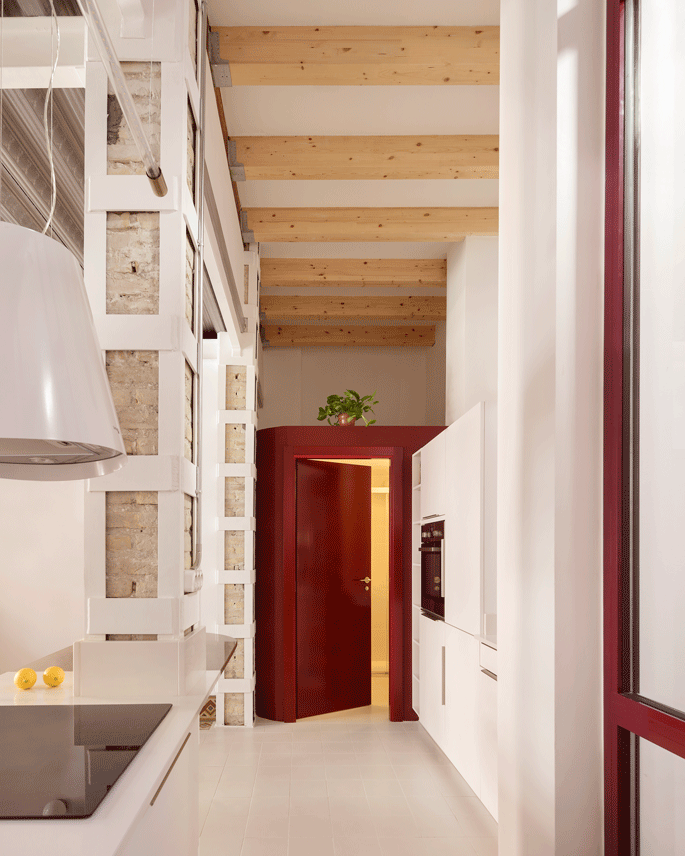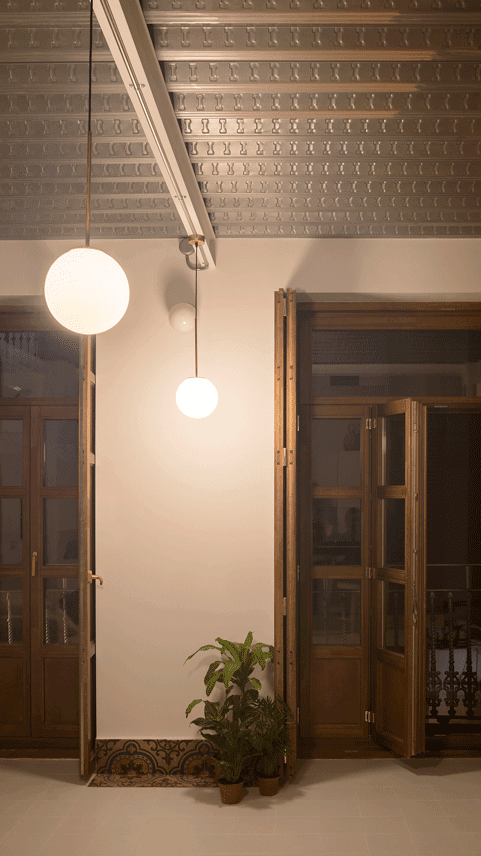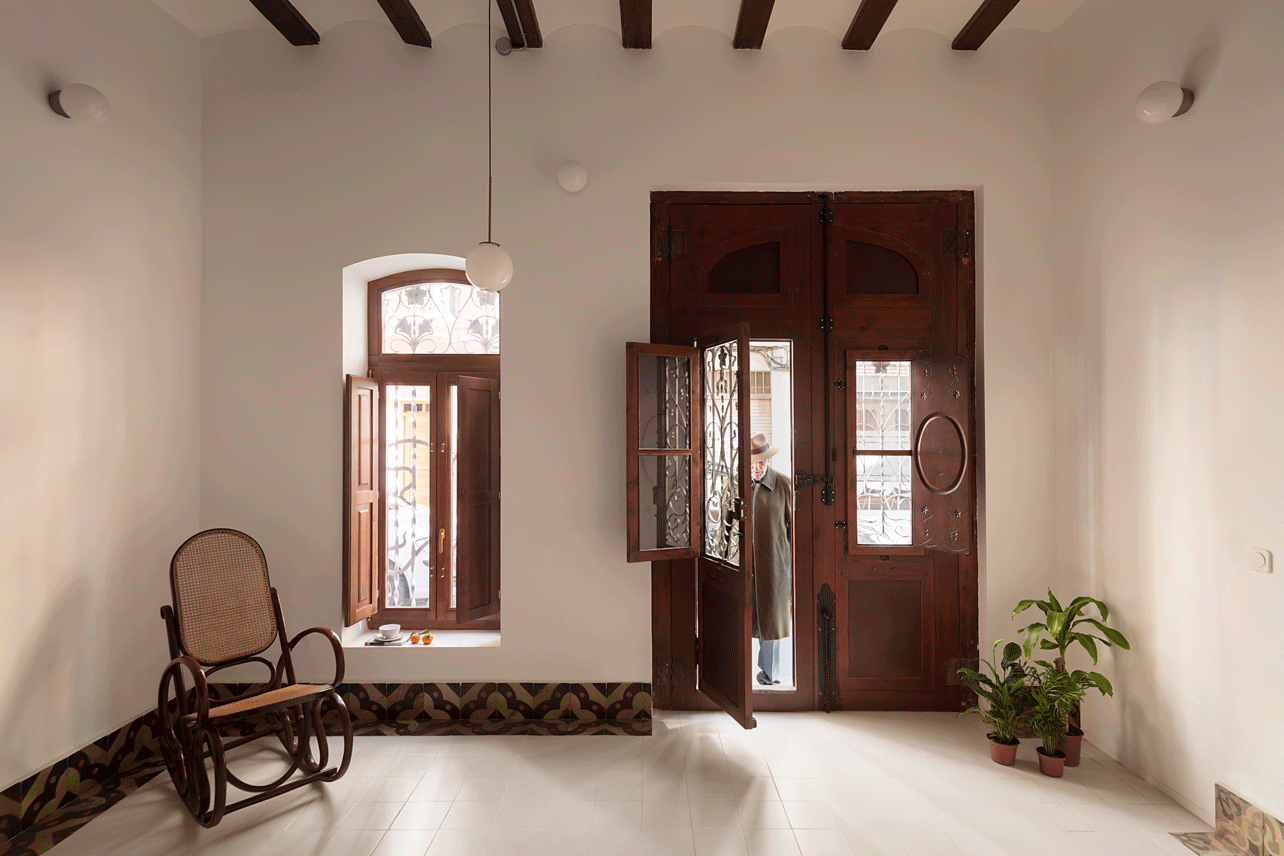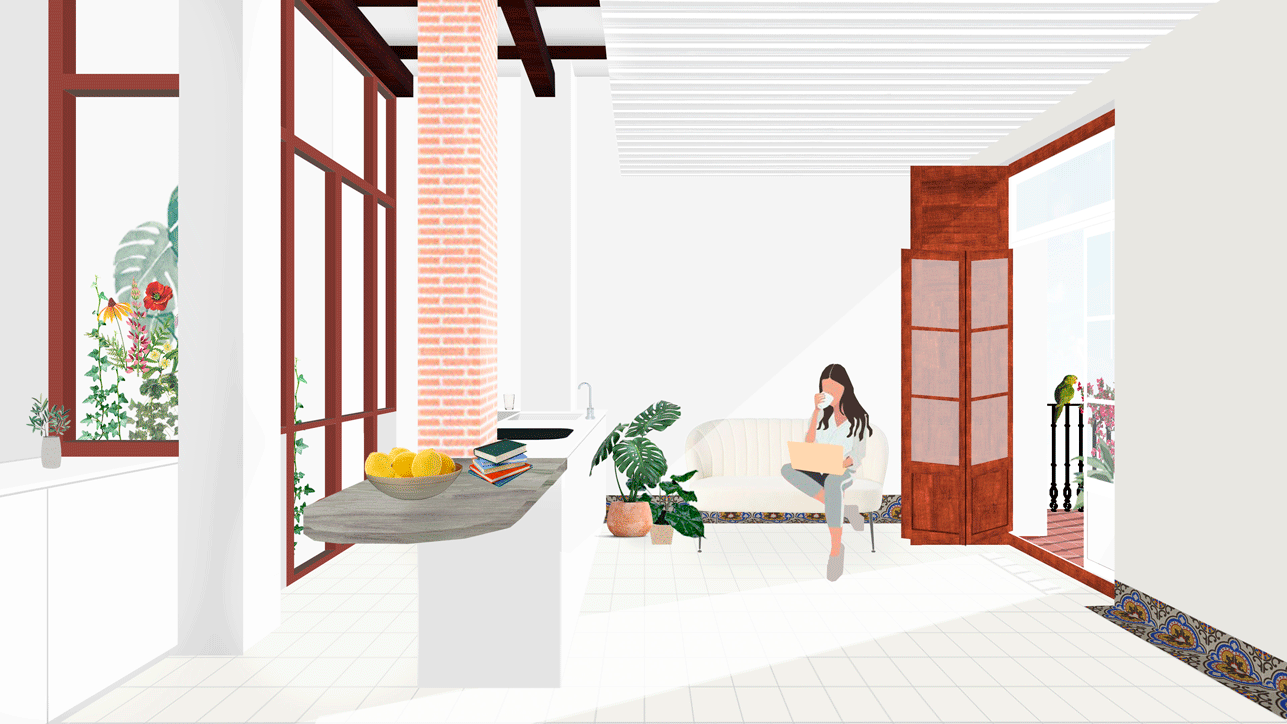“Les pinyes del Cabanyal” is the intervention on a two-floor house built in 1924 whose ornamented and heritage-protected façade hid a floor of barely 50 m2 and whose ventilation was produced by the exchange between the façade openings and a rear chimney. Over the years it had suffered several minor interior repairs and at the time of receiving the commission it had been practically abandoned for several years.
Our task was to work on it without enlarging the volume and transform it into a building with two independent apartments and a third technical floor.
At the distributive level we were very constrained by the dimensions of the floor, especially when we had to accommodate a staircase for common use to give access to the upper floors.
On the other hand, the main objective was to convert an interior with practically no natural lighting – at the back there is only a skylight that introduces diffuse natural lighting – into a succession of pleasant spaces full of details.
We partially emptied the interior, including a vaulted stairs with an excessive slope, and we reinforced the existing structure in order to support a new floor slab in the space that was hidden between the reeds and the sloping roof.
We built a new and comfortable staircase that would connect the three floors and that would be in itself a cozy space from the small entrance hall to the landing on the attic floor.
The two apartments were to be the same in their distribution – an open space in which the only closed cubicle is a box containing the bathroom without touching the ceiling – but on a spatial and sensory level we wanted to make modifications that, although not major architectural interventions, would make each floor unique and special.
The first floor retains the existing floor slab of wooden beams and ceramic beams as beams, while on the second floor a new one is built: the first bay is covered by a mixed steel-concrete slab that leaves the sheet metal and metal beams visible, profoundly changing the appearance by contrast with the existing; and the second bay, above the bathroom and kitchen, is covered with a wooden slab placed higher above the ground to achieve a relief. The route ends in the attic whose sloping slab -the roof of the building-, previously hidden by the reeds, is now visible.
Within the possibilities that the regulations allowed us for a protected building, from the first moment we had a very clear intention to differentiate the existing parts from the new ones. We tried to make the pre-existence shine without rehabilitating in a mimetic way or making the intervention compete with it, but we tried to harmonize both parts so that we could reinterpret the past with the letters of the present.
On the façade we restored the wooden masonry that was in better condition (such as the access doors) and highlighted the precious details of the shutters made by a cabinetmaker, we returned the silver color so characteristic of the neighborhood to the balcony railings and cleaned the wall moldings to reveal the rich decoration.
In the interior we recovered the coloured cement tile floor but, instead of replacing them in the same way once repaired, we used them in the perimeter to remove visual weight and introduce light into the houses, and we replaced it with a light ceramic as pavement. We used the colors of the cement tiles to work on the interior designs: the bathroom box and the skylight woodwork were painted in burgundy and the details of the railing and the staircase flooring were painted in mustard.
We wanted to transfer the rounded shapes of the façade to the interior: to the break-up of the flooring along the staircase, to the smoothness of the handrail or to the volume of the bathroom as a sculptural piece.
In short, it is a rehabilitation in which we have worked with affection on every detail in a careful and delicate way, respectful with the pre-existence but without falling into a mimicry, which allows to highlight it by contrast.
